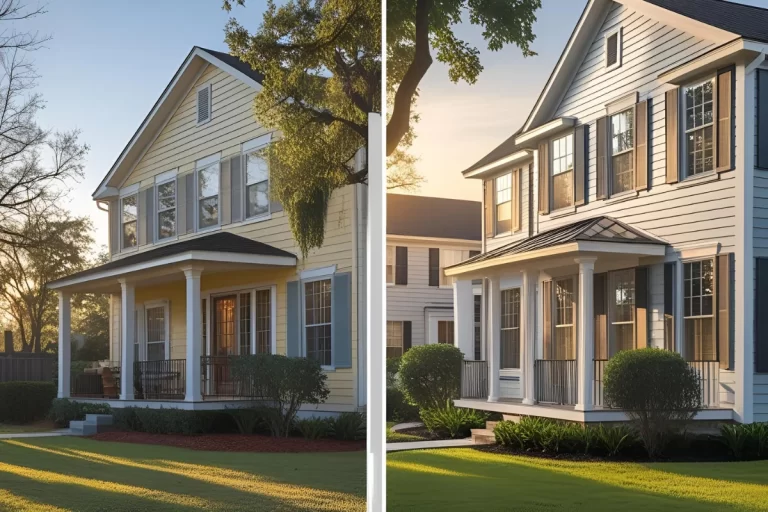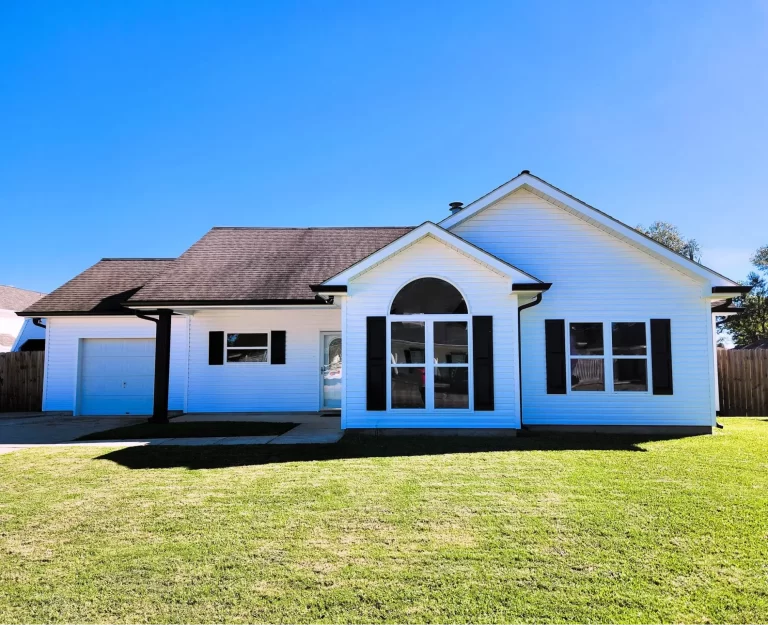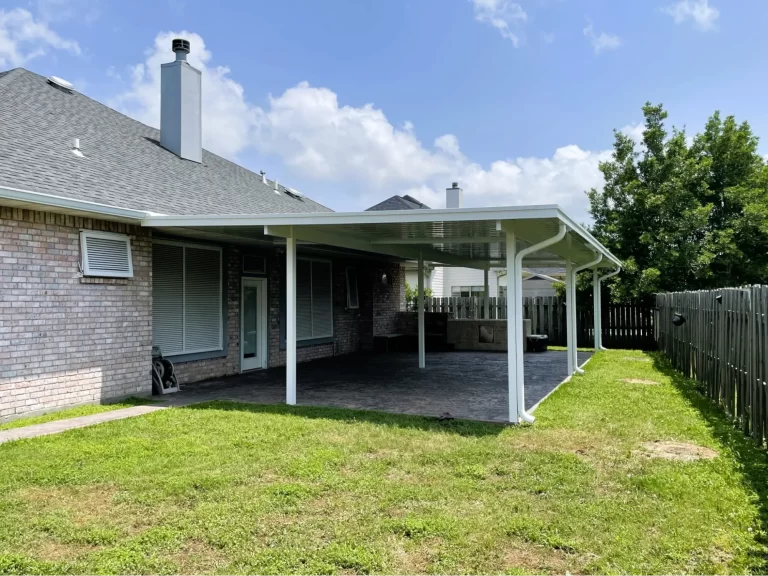For homeowners in Metairie and the greater New Orleans area, summer isn’t just a season of vibrant festivals and delicious cuisine; it’s also a time of heightened awareness regarding severe weather. Our unique climate means we are no strangers to torrential downpours, tropical storms, and the looming threat of hurricanes. While major storm preparedness often focuses on windows and emergency kits, it’s the seemingly minor components of your home’s exterior – specifically your gutters and soffit – that play a crucial, often underestimated, role in protecting your property from significant water damage.
At Capital Improvement, we understand that a home in Louisiana is constantly battling moisture. Our comprehensive renovation and remodeling services are designed to build resilience into your property. When it comes to storm protection, the health of your gutter and soffit system is paramount. Neglecting these vital components can lead to a cascade of costly issues, from foundation problems and landscape erosion to interior water damage and pervasive mold growth. This article will delve into the essential maintenance of your gutters and soffit, guiding you through a proactive approach to safeguard your home against the intense summer storms that define our region.
The Critical Roles of Gutters and Soffit in Storm Protection
Before we dive into maintenance, let’s briefly revisit why gutters and soffit are so crucial, especially in a storm-prone area like ours:
- Gutters: The Rainwater Management System: Your gutters are the first line of defense against water damage. They collect rainwater from your roof and channel it safely away from your home’s foundation. Without properly functioning gutters, water would simply cascade off the roof edges, saturating the ground around your foundation, eroding landscaping, and potentially seeping into your basement or crawl space. During a heavy summer storm, this uncontrolled flow of water can exert immense pressure, leading to significant damage.
- Soffit: The Eaves’ Protector and Attic’s Ventilator: The soffit is the material that covers the underside of your roof’s overhang. While it contributes to your home’s aesthetic appeal, its primary function is protective. Soffit often contains vents that allow air to circulate into your attic. This ventilation is vital for preventing heat and moisture buildup in the attic, which can lead to wood rot, mold growth, and even increased energy costs. During storms, a damaged soffit can provide direct entry points for wind-driven rain, pests, and even larger debris into your attic space.
Essential Gutter and Soffit Maintenance for Summer Storm Preparedness
Proactive maintenance of your gutter and soffit system before storm season hits is far more effective and less costly than dealing with the aftermath of damage. Here’s a detailed checklist of what to do:
Phase 1: Initial Inspection & Debris Removal (DIY)
This is your first step in preparing for summer storms. A thorough visual inspection and basic cleaning can reveal many potential issues.
To Do: Visually inspect your gutters and soffit, and clear obvious debris.
Step-by-Step Instructions:
- Safety First: Always use a sturdy ladder on level ground. If working at heights makes you uncomfortable, or your roofline is very high, consider hiring professionals. Wear heavy-duty gloves to protect your hands from sharp debris and potential pests.
- Clear Large Debris from Gutters: Begin by physically removing large clumps of leaves, twigs, shingle grit, and other debris from your gutters. Start at one end and work your way to the downspouts. A gutter scoop or a small trowel can be helpful.
- Flush Gutters with Water: Once large debris is removed, use a garden hose to flush water through the gutters. Observe how the water flows. It should flow freely towards the downspouts without overflowing or pooling.
- Troubleshooting: If water pools, your gutters might be improperly pitched (sloping towards the house or not enough slope towards the downspout), or there might be an unseen blockage. If water overflows, the gutters are still clogged or too small for your roof’s runoff capacity.
- Check Downspouts for Clogs: Ensure water flows freely out of the bottom of the downspouts. If not, the downspout is clogged.
- To Do: Unclog downspouts.
- Step-by-Step Instructions: If a garden hose doesn’t clear it, try disassembling the downspout sections or using a plumber’s snake to dislodge the blockage. Be prepared for a rush of water and debris once the clog is cleared.
- Inspect Soffit from the Ground: Walk around your home and visually inspect the soffit. Look for any visible gaps, cracks, holes, sagging, or missing panels. Note areas where paint is peeling or there are noticeable water stains.
- Look for Signs of Pests: Check for wasp nests, bird nests, or signs of rodent entry (gnaw marks, droppings) around both gutters and soffit. Pests can cause significant damage and create entry points for water.
Phase 2: Detailed Examination & Minor Repairs (DIY with Caution / Professional Recommended)
This phase involves a closer look and addressing minor issues. For anything beyond simple fixes or if you’re working at significant heights, it’s highly recommended to call professionals like Capital Improvement.
To Do: Closely inspect soffit and fascia, clean any visible mold/mildew, and assess gutter integrity.
Step-by-Step Instructions:
- Close-Up Soffit Inspection (from ladder, with caution): If safe to do so, carefully examine the soffit panels more closely.
- Check Soffit Vents: Ensure all soffit vents are clear of debris, paint, or insulation. Proper ventilation is vital for attic health, especially in humid Louisiana. Use a soft brush or vacuum to clear any blockages.
- Look for Water Stains or Discoloration: These are telltale signs of water intrusion, often from overflowing gutters or a leaky roof.
- Inspect for Rot or Soft Spots: Gently press on any suspected areas of wood soffit. Soft, spongy areas indicate rot, which needs immediate attention.
- Clean Soffit Surfaces: Using a mild household cleaner (like diluted bleach or an exterior house wash specifically for mold/mildew) and a soft brush or cloth, gently clean any mold, mildew, or dirt from the soffit. Rinse thoroughly.
- Examine Gutter Fasteners and Pitch:
- Check for Loose Hangers/Fasteners: Ensure all gutter hangers are securely attached to the fascia board. If any are loose or pulling away, tighten or replace them. Loose gutters can sag and pull away during heavy rains, leading to overflow.
- Verify Proper Pitch: Stand at one end of a gutter section and visually check that it gently slopes towards the nearest downspout. There should be a slight incline to facilitate water flow. If the pitch is incorrect, water will pool, leading to clogs and deterioration.
- Inspect Gutter Seams and End Caps: Look for leaks at seams where gutter sections join or at end caps. Small leaks can be patched with gutter sealant, but larger cracks may require a section replacement.
- To Do: Apply gutter sealant to minor leaks.
- Step-by-Step Instructions: Clean the area thoroughly, ensuring it’s dry. Apply a generous bead of high-quality gutter sealant (compatible with your gutter material) over the crack or seam. Smooth with a gloved finger or putty knife. Allow to cure per manufacturer instructions.
- Assess Downspout Extensions: Ensure your downspouts extend far enough away from your foundation (at least 5-10 feet) to prevent water from pooling around the base of your home. If not, consider adding extensions.
Phase 3: Professional Assessment and Repair (Capital Improvement’s Expertise)
For more complex issues, safety concerns, or comprehensive protection, contacting a professional contractor like Capital Improvement is the smart and safe choice.
To Do: Schedule a professional gutter inspection and address significant damage.
Professional Recommendation – Contact Capital Improvement for:
- Significant Gutter Damage:
- Problem: Gutters that are severely bent, dented, sagging, or detached from the fascia cannot effectively manage water flow during storms. Multiple leaks or large cracks also warrant replacement.
- Why Capital Improvement: We can assess whether repair or full replacement is more cost-effective. We utilize durable materials like seamless aluminum, which minimizes leaks and is ideal for Louisiana’s heavy rainfall. Our expert installation ensures correct pitch and secure fastening, maximizing water diversion.
- Fascia Board Damage (Behind the Gutters):
- Problem: The fascia board is what your gutters attach to. If it’s rotted, soft, or pulling away, your gutters won’t be securely supported. This can be caused by long-term gutter overflow or roof leaks.
- Why Capital Improvement: Repairing or replacing fascia requires precise carpentry and often involves working at heights. We can seamlessly replace damaged sections, use moisture-resistant materials, and ensure the fascia is properly secured to support new or existing gutters.
- Extensive Soffit Damage or Rot:
- Problem: Large holes, widespread rot, or significant sagging in the soffit compromises your attic’s protection and ventilation. This often indicates underlying water or pest issues.
- Why Capital Improvement: We can identify the root cause of the soffit damage, whether it’s poor attic ventilation, a leaky roof, or pest intrusion. We perform precise replacements, ensuring proper ventilation is restored and the area is sealed against future problems.
- Persistent Clogging Issues (Even After Cleaning):
- Problem: If your gutters frequently clog despite regular cleaning, it might indicate that your existing gutters are too small for your roof’s runoff capacity or that your property has an abundance of falling debris.
- Why Capital Improvement: We can recommend and install larger gutters (e.g., 6-inch gutters) or high-quality gutter guards that can significantly reduce debris accumulation while handling heavy rainfall.
- Roof Leaks Originating from Gutter/Soffit Problems:
- Problem: Water stains on your interior ceilings or walls often point to roof leaks, which can sometimes be traced back to clogged gutters or damaged soffit allowing water to back up under shingles.
- Why Capital Improvement: Our team can diagnose the precise source of the water intrusion, which might involve a combination of gutter issues, soffit problems, and roofing repairs. We provide integrated solutions to ensure the entire system is watertight.
Your Home, Protected
In the unpredictable climate of Metairie and the New Orleans area, being proactive about your home’s exterior maintenance is not just a recommendation—it’s a necessity. Your gutters and soffit are unsung heroes in the battle against summer storms, and their proper function is critical to preserving your home’s structural integrity and preventing costly damage. By following this comprehensive checklist and knowing when to call on the expertise of Capital Improvement, you can ensure your home is well-prepared, secure, and ready to withstand whatever the Louisiana summer brings. Contact us today for a professional assessment and let us help you protect your most valuable investment.





